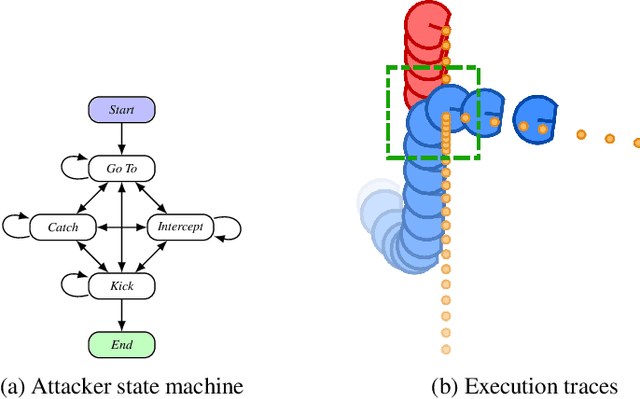SMT-based Robot Transition Repair
Paper and Code
Jan 09, 2020



State machines are a common model for robot behaviors. Transition functions often rely on parameterized conditions to model preconditions for the controllers, where the correct values of the parameters depend on factors relating to the environment or the specific robot. In the absence of specific calibration procedures a roboticist must painstakingly adjust the parameters through a series of trial and error experiments. In this process, identifying when the robot has taken an incorrect action, and what should be done is straightforward, but finding the right parameter values can be difficult. We present an alternative approach that we call, interactive SMT-based Robot Transition Repair. During execution we record an execution trace of the transition function, and we ask the roboticist to identify a few instances where the robot has transitioned incorrectly, and what the correct transition should have been. A user supplies these corrections based on the type of error to repair, and an automated analysis of the traces partially evaluates the transition function for each correction. This system of constraints is then formulated as a MaxSMT problem, where the solution is a minimal adjustment to the parameters that satisfies the maximum number of constraints. In order to identify a repair that accurately captures user intentions and generalizes to novel scenarios, solutions are explored by iteratively adding constraints to the MaxSMT problem to yield sets of alternative repairs. We test with state machines from multiple domains including robot soccer and autonomous driving, and we evaluate solver based repair with respect to solver choice and optimization hyperparameters. Our results demonstrate that SRTR can repair a variety of states machines and error types 1) quickly, 2) with small numbers of corrections, while 3) not overcorrecting state machines and harming generalized performance.
 Add to Chrome
Add to Chrome Add to Firefox
Add to Firefox Add to Edge
Add to Edge